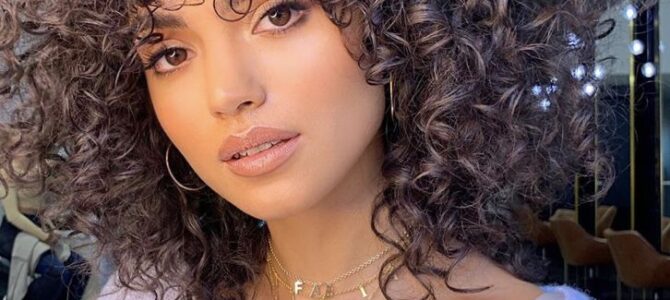Laser hair removal is a permanent solution for reducing unwanted body hair. However, it’s not for everyone.

Hair that lacks pigment, such as white, gray, or blond hair, doesn’t respond to treatment because it can’t absorb the light energy needed to destroy the hair follicle.
Shaving the area before a session is important to help the hairs absorb the laser’s light energy. Also, avoid waxing or plucking any hairs.
Laser hair removal is a safe and effective treatment that uses light energy to destroy the pigment in a hair follicle. This causes the follicle to stop producing hair and prevents the growth of new unwanted hair. Although some hair may regrow, many people experience permanent reduction in hair density or a complete lack of hair growth. Depending on the skin complexion and type of hair, laser treatments may require multiple treatment sessions to achieve desired results. It is also a good idea to schedule touch-up sessions every year to maintain the results of your treatment.
Before your treatment begins, a medical specialist (such as a dermatologist) will clean the area and apply numbing cream if needed. After the numbing agent has taken effect, the technician will then focus a beam of high-energy light at your desired treatment area. This process usually takes only a few minutes for small areas and a little longer for larger areas.
The melanin in your hair follicle absorbs the light energy and turns it into heat. This damages the hair follicle and prevents it from producing more hair. The cooling technology built into the laser prevents the surrounding layers of your skin from being damaged.
Since the laser only targets melanin in a hair follicle, it will not damage other types of cells. However, some types of hair follicles cannot be treated because they do not have melanin pigment. These include white or grey hair, which cannot be targeted by the laser, and red hair, which can be targeted but does not produce enough melanin to respond to the laser.
The most common areas for laser hair removal are the legs, arms, and stomach. Women also prefer laser hair removal to remove the unwanted hair on their face, bikini line, and upper lip. In addition to reducing unwanted hair, women who have excessive hair growth on their face may benefit from birth control pills or Spironolactone to balance the hormonal imbalance responsible for this condition. Laser treatment can also be used on the neck to treat ingrown hairs and pseudo-folliculitis, a condition that causes swollen nodules in the skin.
What Are the Side Effects?
The doctor will press a hand-held laser instrument against your skin. The device has a cooling device or cool gel on the tip that protects your skin and lessens the side effects of the laser beam. When the doctor activates the laser, a beam of light passes through your skin to the hair follicles. The heat from the laser beam damages the follicles, inhibiting hair growth. You might feel a slight discomfort similar to a warm pinprick. Depending on the area being treated, treatment might take up to an hour.
Your skin might be red and swollen after the treatment. You might also experience a short-lived tingling or a feeling that’s like a mild sunburn. It’s important to avoid direct sunlight on the treated area after laser hair removal, and you might need to use a topical cream or medication to keep the skin protected.
Laser hair removal isn’t recommended if you’re pregnant. Scientists haven’t studied the effects of laser treatments on unborn babies, and it’s important to speak with your doctor before undergoing this procedure. It’s also not a good idea to undergo laser hair removal while you’re taking birth control pills. These medications can affect the way your body absorbs the laser energy, which can cause complications during and after treatment.
Some people might notice changes in the pigmentation of their skin after a laser hair removal session. The changes might be due to superficial burns or pigmentation issues that are triggered by the laser’s heat. These changes are temporary, but if you’re concerned, talk to your dermatologist.
You might have a higher risk of complications from laser hair removal if you’ve had other cosmetic procedures on your skin in the past. Plucking, waxing and electrolysis disturb the hair follicles, which can reduce the effectiveness of laser hair removal. You should avoid these types of treatments for 6 weeks before your laser hair removal appointment. It’s also a good idea to avoid blood-thinning medications, such as aspirin or anti-inflammatories, before your treatment.
How Often Do I Need to Have Treatments?
If you are a candidate for laser hair removal, we will develop an individualized treatment plan during your initial consultation. The total cost will be determined at that time.
The number of treatments you need for permanent hair reduction will depend on the area being treated and its natural growth cycle. We will recommend a series of treatments that will be spaced 4-8 weeks apart, so that we can target new hair growth with each session. The laser energy will zero in on the dark color of the hair follicle and super-heat it until it is destroyed beyond repair, and cannot grow hair ever again.
Laser hair removal is most effective for those with darker hair on light skin, since the contrast between the hair color and the skin tone makes it easier for the laser to absorb the energy. This type of laser treatment works best for those with blonde, gray, or white hair as well.
For most patients, the first treatment session will be a bit uncomfortable and take up to an hour or more, depending on the size of the area being treated. If your dermatologist applies a topical pain-relieving gel or anesthetic to the area before beginning treatment, it might be more comfortable.
After your initial treatment session, you will not need to shave the area again. The hair will regrow a little lighter in color, and will usually be much thinner than before. You may also notice fewer ingrown hairs in the area, and less skin irritation. The neck is an especially difficult area for men to keep shaved and free of ingrown hairs, which can result in pseudo-folliculitis. This can be very painful and can lead to a lot of swelling.
When you reach the point of no more hair growth in your targeted areas, you will be completely hair-free and never have to worry about shaving, waxing, or using depilatory creams again. Your daily life will be so much simpler and you will feel so confident in your body, especially during the summer when we tend to show more skin.
Are There Any Complications?
There are some rare side effects that may occur from Laser Hair Removal, but these are typically temporary. These include skin changes, including pigmentation (skin darkening or lightening), blistering, scarring and infection. These can usually be avoided by choosing a practitioner who is experienced and suitably qualified, as well as following their advice for preparing for and caring for the area post-treatment.
The most common side effect is redness and swelling in the treatment area. This should clear within a few hours, and you can reduce this discomfort by using aloe vera or a cooling cream. It is also important to avoid sun exposure, even after your treatments have ended, until you are told it is safe by your practitioner. You should also make sure to use a high-SPF sunscreen (at least SPF30) daily, on the areas that have been treated.
During the treatment, you will wear protective eye-wear to protect your eyes from the light coming from the laser. You may feel a slight discomfort as the laser light is applied to the surface of your skin, which some people compare to a warm pinprick. Some areas are more sensitive than others, but most people find that the treatment is tolerable.
Before your appointment, you should shave the area that will be treated, and avoid waxing or plucking hair. You should also avoid tanning in the weeks before your treatment, as tanned skin doesn’t react to the light at the same rate and can cause less effective results or side effects.
Your practitioner will apply a cooling gel or device to the surface of your skin before pulsing the laser light onto the hair follicles. You will probably be asked to keep your eyes closed while this is done, but you might see flashes of light as the laser does its work. Some areas can be more sensitive than others, and you may need to have multiple sessions before your unwanted hair is fully removed.
You can usually achieve good results after just a few treatments, but it might take up to eight treatments for you to achieve your desired result. You’ll need to have regular sessions to prevent hair regrowth, but you can also have occasional maintenance treatments when you want to maintain your results.
